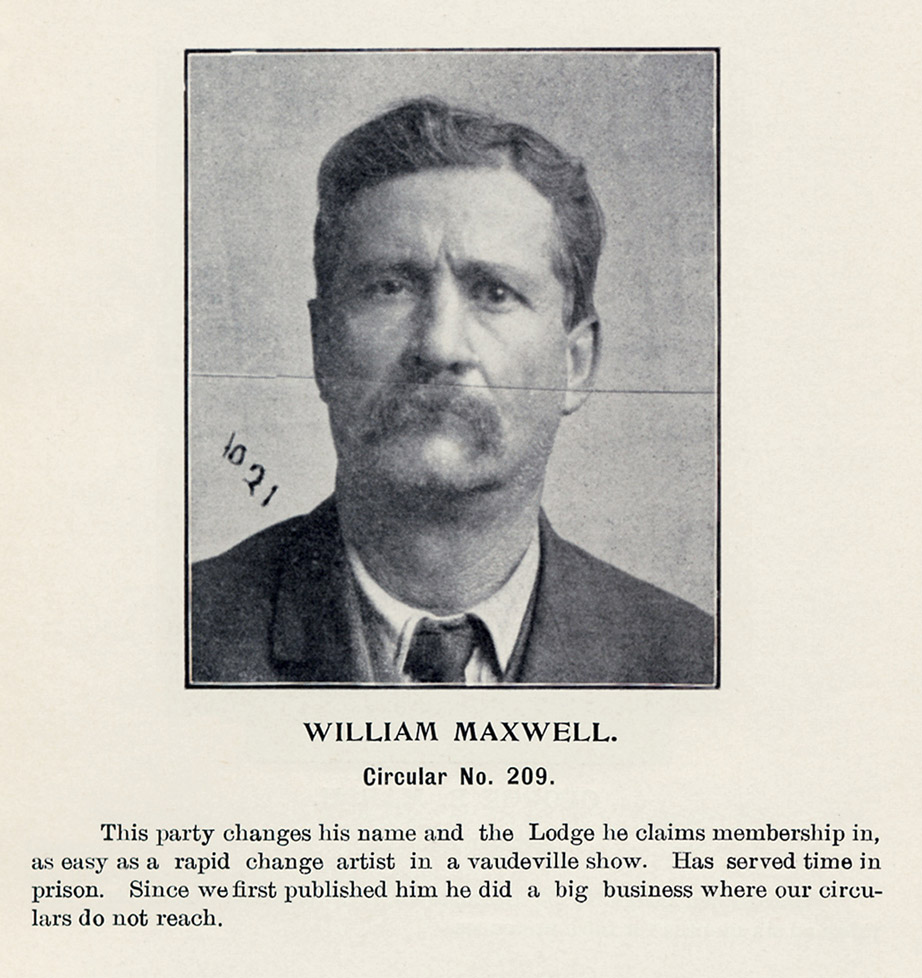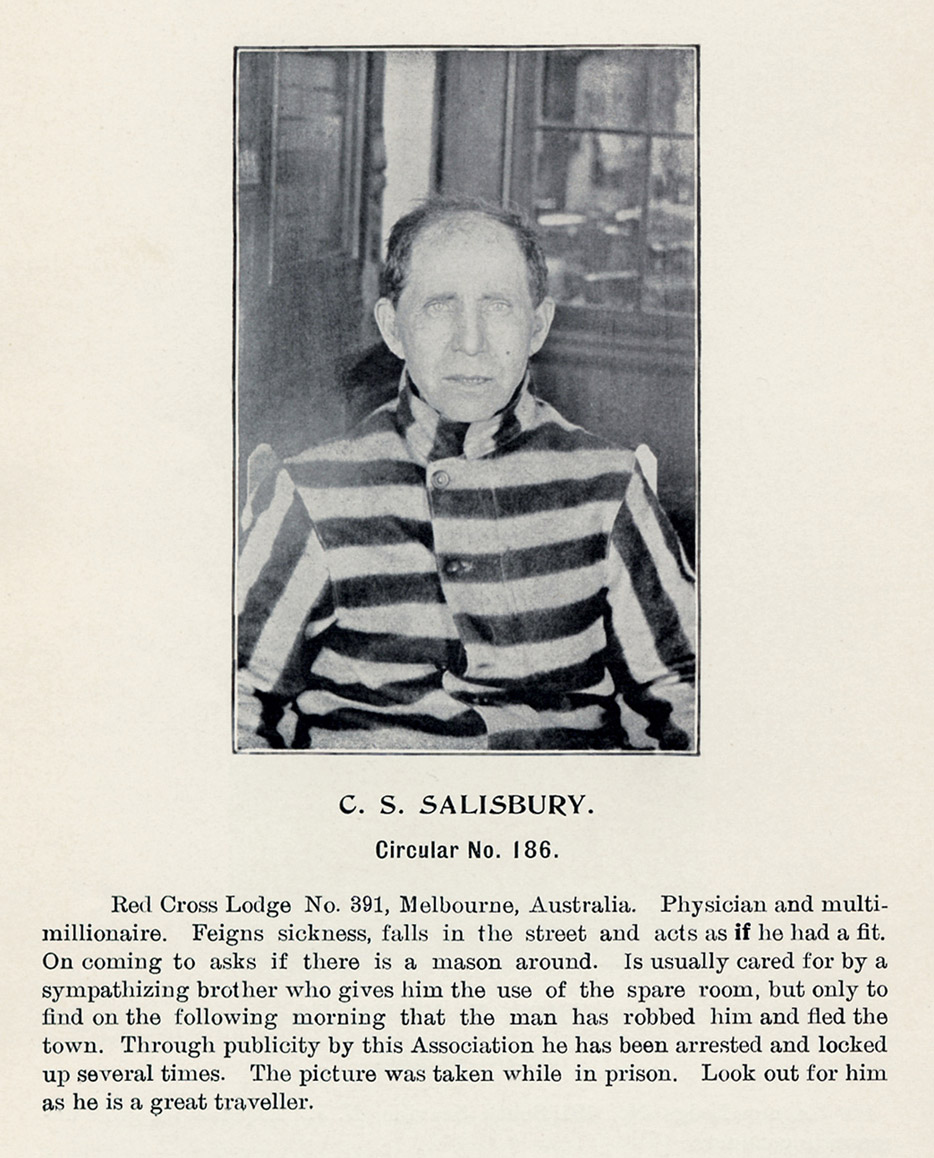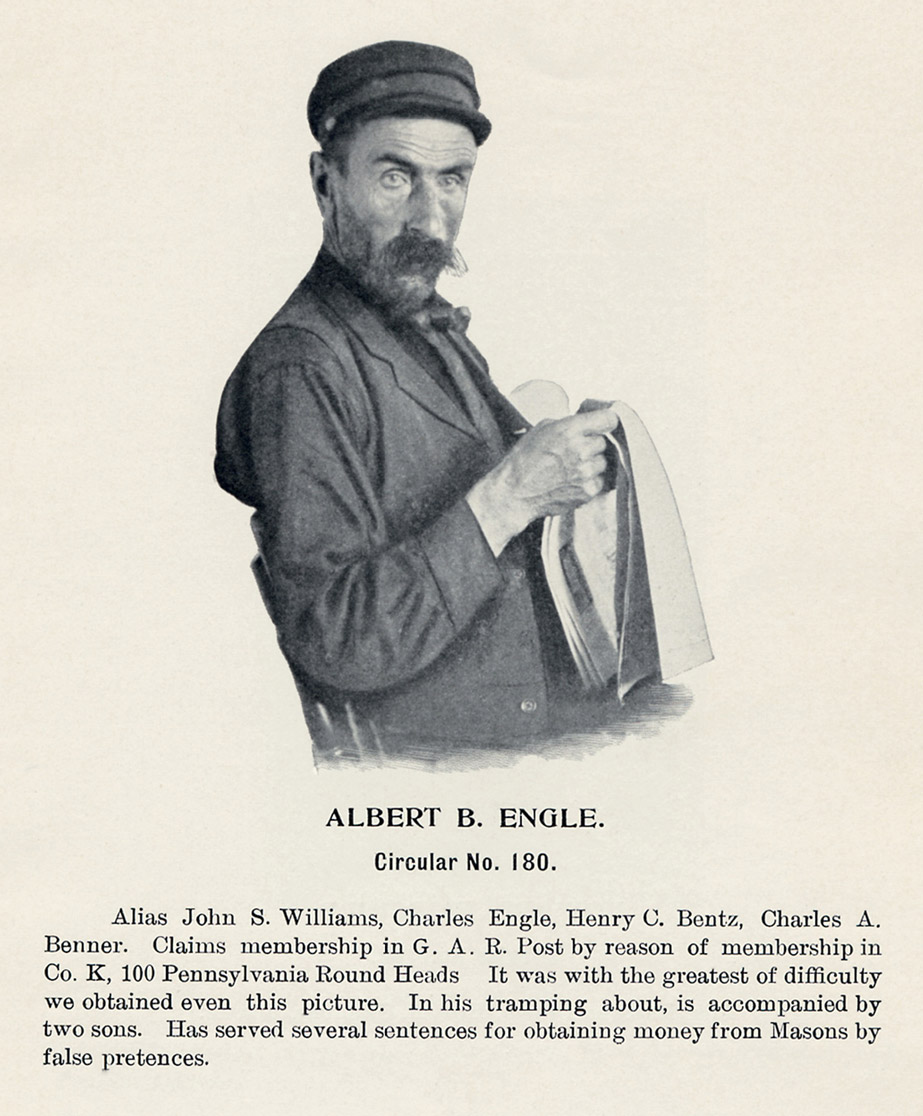Brotherly Deception
The Album of Masonic Impostors
Jeffrey Croteau
On 31 August 1885, a number of North American Masonic groups met in Baltimore to form the General Masonic Relief Association of the United States and Canada, an organization dedicated to “facilitating the discovery and exposure of persons traveling about the country and imposing upon the charities of Masons.”[1]In other words, they formed an organization that made it easier for Masonic charities to identify Masonic impostors.
Freemasonry is the oldest fraternity in the world, one of the best known, and, arguably, the most misunderstood. The British first brought Freemasonry to America in the late seventeenth century; by the early eighteenth century, the fraternity was officially organized in the colonies with the founding of two Grand Lodges. Freemasonry expanded along with the nation—the late nineteenth and early twentieth centuries are often referred to as the “Golden Age of Fraternalism,” a period during which dozens of new fraternal organizations were founded and participation in fraternal groups was a typical social activity for many Americans. By 1896, the Masons claimed a membership of 750,000 members in the US alone.[2]
But why would someone bother to impersonate a Freemason?
At a time when it was uncommon to receive benefits in the workplace or from the government, many turned to fraternal organizations, which used the dues they collected to provide their members with various types of insurance, including death benefits. In effect, one joined a support network, pledging an oath to aid one’s brethren, as well as one’s brethren’s dependents, in a time of need. In many US cities, Masonic relief boards were created as a way to respond to the pressures of a transitory urban population. While local Masonic lodges were able to aid their own members, relief boards stepped in to help Masons who belonged to lodges in other cities, states, or countries. This relief might include financial aid, job assistance, and provision for funerals and burials.[3]
The benefits naturally enticed con men to travel from city to city and pose as Masons. In order to prove that an applicant was in fact a Mason, he was often required to demonstrate knowledge of secret words and “grips” (i.e., handshakes).[4] Yet this alone was not sufficient proof that a Mason was in good standing with his local lodge; to prove this, the applicant would typically have to show some documentation as well. The Masonic Relief Association’s biannual meeting took up the question of appropriate documentation, given the fact that both genuine claimants and con men might present themselves without the necessary papers. “What Should Be Done With Applicants Who Are Without Certificates Or Receipts For Dues, Or Some Proper Documentary Evidence, and Whose Lodges Cannot Readily Be Reached By Telegraph,” a paper presented at the 1911 gathering, offers insight into the astute psychological profiling required to unmask pretenders:
Bearing in mind that the impostor is more than likely to be supplied with the necessary evidence to fix his standing in the Fraternity, there is always a strong probability that an applicant presenting himself without any documentary evidence is the one who, through a lack of knowledge of the requirements, has been careless in the matter of carrying the necessary papers with him, and because of that fact should be given every opportunity to establish his status: It appears to me that in such case the first duty of the examiner should be to ascertain, so far as possible, whether the applicant is in truth a Master Mason. ….
Each examiner must necessarily rely upon his own impressions of the applicant as to what may be accepted as truthful statements from him, but it is well to bear in mind that the most plausible statements and the smoothest stories come from those who are unworthy and who have had previous experience in soliciting relief. The hesitating and awkward applicant ofttimes is entirely worthy, but his lack of experience, his general disinclination to make known his actual condition, and frequently his shame that he should be put in the position of asking relief, makes him appear in a most unfavorable light. The story that runs smooth with a ready answer for every inquiry, should, to my mind, receive the most careful attention and be subjected to the more rigid tests.[5]



In a further effort to thwart scams, the Masonic Relief Association began publishing a monthly Official Warning Circular—cataloguing names, descriptions, and sometimes photographs of known Masonic impostors—which was sent to relief boards around the country to advise them of the con men that might come their way. The hope was that centralized information would spread faster than a Masonic impostor could travel. For example, if the New York board discovered a fraud, a telegram or a telephone call to the Masonic Relief Association would ensure that a notice was placed in the next Circular. By the time the charlatan made his way to Cincinnati, the relief board there would already have seen his mug shot.
Just how many Masonic impostors were there in the late nineteenth and early twentieth centuries? In the twenty-seven-year period between 1885 and 1912, the Masonic Relief Association tallied 4,833 “unworthy cases,” an average of about 180 per year.[6] Naturally, this did not account for Masonic impostors who escaped detection. The Album of Masonic Impostors, published in 1903 by the Association, featured 156 of these men, drawn from circulars published up to that point.[7] A small sampling from this rogues’ gallery is presented here.
- Masonic Relief Association of the United States and Canada, Nineteenth Report, 1913, p. 25. The group dropped the word General from its title sometime between 1903 and 1911.
- Mark A. Tabbert, American Freemason: Three Centuries of Building Communities (Lexington, Mass: National Heritage Museum/New York: New York University Press, 2006), p. 87.
- Lynn Dumenil. Freemasonry and American Culture, 1880–1930 (Princeton: Princeton University Press, 1984), p. 19.
- Tabbert, op. cit., p. 108.
- L. F. Speer, “What Should Be Done With Applicants Who Are Without Certificates Or Receipts For Dues, Or Some Proper Documentary Evidence, and Whose Lodges Cannot Readily Be Reached By Telegraph,” The Masonic Relief Association of the United States and Canada, Eighteenth Report, 1911, pp. 27–28.
- Masonic Relief Association of the United States and Canada, Nineteenth Report, 1913, p. 64.
- The Album of Masonic Impostors, as well as many issues of the Official Warning Circular, and various supporting materials, including many issues of the Association’s annual proceedings, are in the collections of the National Heritage Museum’s Van Gorden-Williams Library & Archives, one of the largest Masonic libraries in the United States, located in Lexington, Massachusetts.
Jeffrey Croteau is a writer and librarian living in Cambridge, Massachusetts. His work has recently appeared in the Paris Review, Fence, and Library History.
Spotted an error? Email us at corrections at cabinetmagazine dot org.
If you’ve enjoyed the free articles that we offer on our site, please consider subscribing to our nonprofit magazine. You get twelve online issues and unlimited access to all our archives.